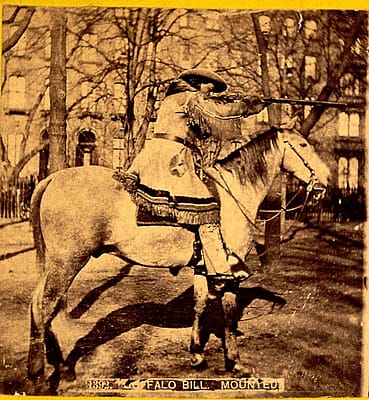
Mythical Ithaca: Discovering a Story in the Records
One of the best feelings in the world comes from looking at a collection of records before anyone else.
To give a brief overview, this gun company started in 1883 under the name Ithaca Gun Works. This factory possessed the manufacturing capability of producing up to 10 guns a day. The cover of their 1885 catalog toted the logo “Manufacturers of Fine Breech-Loading Double Barrel Shot Guns.” This company made effective design changes that lowered manufacturing costs, accommodated stronger ammunition, and appealed to an ever-changing market.

The “me first, me first!” mindset is strong in the museum world. Indeed, the chance to explore the unknown and make a new discovery fuels researchers across the world. One of the research projects that the Cody Firearms Records Office took on recently includes examining 24 archival boxes filled with Ithaca Gun Company records.
Personalities
The Ithaca Gun Company attracted many distinct personalities to their side of the shotgun manufacturing field. One such man who used Ithaca shotguns was John P. Sousa. Known as the “March King” for his leadership of the US Marine Band, Sousa also enjoyed the sport of trapshooting. He used an Ithaca Single Barrel Trap Gun is several competitions, inspiring the company to create a special promotion featuring Sousa and his firearm.

Annie Oakley used dozens of guns during her shooting career, but at least two of them were Ithaca shotguns. The Cody Firearms Museum possesses one such shotgun—a Grade 4 Single-Barrel Trap Gun—in its collection. According to an old Ithaca Gun Company factory journal, the company shipped this firearm to Oakley in January 1916. Before her death in 1926, the company often featured photographs of Annie Oakley in their advertisements and catalogs.
Recently, the Center received a donation of 24 boxes of Ithaca related records. From lists of 1880s serial numbers to 1970s advertisements, these boxes contain the fascinating records of this company’s wonderfully confusing past and the people who used Ithaca firearms.
The Struggle is Real
Unfortunately, these records have taken a beating. In addition to the wrinkles, blotched ink, and 100-year-old greasy fingerprints, these pages are ripe with do-it-yourself repair jobs. While the intention behind these repairs are good, tape is bad. Very, very bad. Especially for old paper.
Adhesives like scotch or masking tape are considered the enemy to conservators and archivists. These chemically unstable adhesives will shrink and discolor with age. This can seriously damage the material so much so that it becomes unreadable.
Still, these records are priceless due to the information typed or written on them. The Cody Firearms Records Office currently creates factory letters for Winchesters, Marlins, and LC Smith firearms, and they aim to expand that with the new addition of the Ithaca records. Still, it will take time to go through the 24 boxes the Center possesses and learn what all these new scribbles mean. With help from Walter Snyder, an Ithaca expert if there ever was one, the Records Office plans to discover and illustrate the story of Ithaca in greater detail than ever before.
Written By
Kirsten Belisle
Kirsten Belisle is from Roscoe, Illinois, and she is currently pursuing a master’s degree in Museum Studies at Western Illinois University-Quad Cities. As an intern for the Cody Firearms Museum, Kirsten will create educational programming in the gallery space and assist with a visitor studies campaign within the museum. She has many interests in the history field, but a few include paleography (the study of old writing), US railroad history, and the role firearms played in developing leisure culture.












